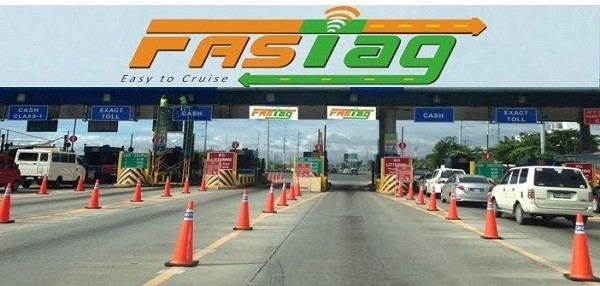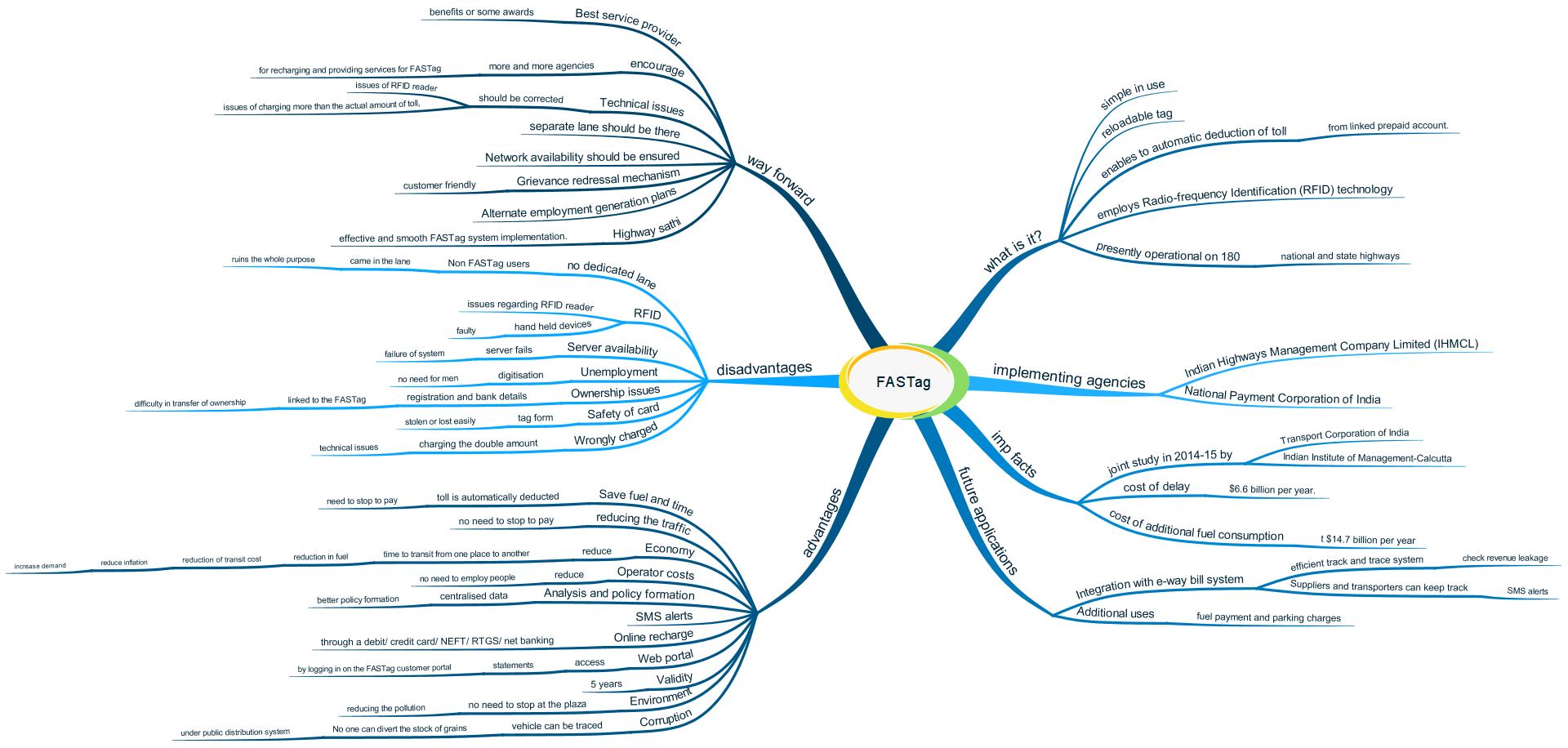FASTag – Working, Advantages & Disadvantages

From Current Affairs Notes for UPSC » Editorials & In-depths » This topic
IAS EXPRESS Vs UPSC Prelims 2024: 85+ questions reflected
FASTag is made mandatory for all vehicles, private and commercial, from January 15, 2020. According to the FASTag transactions data released on January 1, 2020, by National Payments Corporation of India, about 6.4 crore FASTag transactions, worth Rs.1,256 crore, were processed in December against 3.4 crore transactions worth Rs.774 crore in November. Paytm Payments Bank issued over 40% of all FASTags in December. Currently, the government is taking the necessary steps to promote it.
What is FASTag?
- FASTag is a Radio Frequency Identification (RFID) enabled sticker affixed on the windscreens of vehicles.
- Radio Frequency Identification (RFID) technology is used to make toll payments directly from an account, which is linked to the FASTag, while the vehicle is in motion.
- It comes under the National Electronic Toll Collection (NETC) program that was launched by National Payments Corporation of India (NPCI), National Highways Authority of India (NHAI) and Indian Highways Management Company Limited (IHMCL).
What are the objectives of the NETC program? (Benefits)
Some of the objectives of the NETC program include:
- Use FASTag to help reduce the waiting time, fuel consumption and vehicle’s operating cost.
- Accommodate the increasing traffic without additional lanes
- Eliminate acceleration, idling and the harmful vehicular emissions using FASTag
- Reduce congestion around plazas
- Reduce pollution
- To provide customers with the flexibility of paying their plaza bill
- Reduce cash handling which helps enhance audit control by centralising user accounts
- Improved data collection and information to monitor traffic and rework the government’s toll policy
- Promotes digital payments and keep tabs on vehicles and the toll booths
- Reduce the cost of storage and transportation of cash and labour at the tollbooths.
How does FASTag work?
- Whenever a vehicle passes through the Electronic Toll Collection (ETC) lane of the Toll Plaza, the Toll Plaza system will capture the FASTag details like Tag ID, vehicle class, etc., and send them for processing to the acquiring bank.
- The Acquiring bank will send the request to the National Electronic Toll Collection (NETC) Mapper to verify the tag details.
- Once the Tag ID is validated, NETC Mapper responds with details like Tag Status, Vehicle class, VRN, etc. If the Tag ID is not present in the NETC Mapper, it will respond as the Tag ID not registered.
- The acquirer host will calculate the appropriate toll fare and initiate a debt request to the NETC system after the successful validation of Tag ID from NETC Mapper.
- NETC System will switch the debit request to the respective issuer bank for debiting the customer’s account.
- Then, the issuer host will debit the linked tag holder’s account and send an SMS alert to the tag holder. The issuer host will then send the response message to the NETC system. If the response is not sent within a specific time, the transaction will be considered as Deemed Accepted.
- NETC system notifies the response to the acquirer host and the acquirer host will notify to the respective toll plaza system.
What are the incentives provided by the government to promote FASTag?
- To promote the use of FASTags, the vehicles with FASTags will enjoy 2.5% cashback until March 2020, while cash payment would invite double the toll charge.
- The FASTag issuance fee of Rs.100 is waived off. However, customers will have to pay Rs.250 as the security deposit and maintain a minimum balance of Rs.150.
What can be the future applications?
- Integration with the e-way bill system– will result in a more efficient track and trace system. It will check revenue leakage at the toll plaza. It will help revenue authorities check whether goods vehicles are actually headed to the specified destination. Suppliers and transporters can keep track of their vehicles through SMS alerts generated at each tag reader-enabled toll plaza.
- Additional uses: FASTag can be used at other facilities like fuel payment and parking charges
What are the disadvantages?
- RFID– during initial stages of implementation there were issues regarding RFID reader. Most of the time it was not working. Sometimes handheld devices also become faulty
- Server availability– If the server fails, it will result in the failure of the automated electronic deduction system.
- Unemployment- toll plazas had hired many people for deducting toll. They will become unemployed as there will no need for them.
- Ownership issues– owner’s registration and bank details will be linked to the FASTag account, so in case the owner sells the vehicle, it is not clear whether a new owner will be able to drive the car with the same FASTag or not.
- Safety of card– as it comes in tag form, it may be stolen or lost easily. In such a situation one will need to notify the authority to block the FASTag account
- Wrongly charged– there were many instances of charging the double amount of the original amount due to some technical issues.
What is the way forward?
- There may be competition. The best service provider will be given some benefits or some awards
- The government should encourage more and more agencies for recharging and providing services for FASTag
- Technical issues should be corrected. E.g. issues of the RFID reader, issues of charging more than the actual amount of toll, etc.
- One separate lane should be there for FASTag users.
- Network availability should be ensured all-round the year.
- Grievance redressal mechanism should be more and more customer friendly
- Alternate employment generation plans should be made by the government to provide employment to those who lost their jobs due to technology transformation.
- Highway sathi- an initiative of Metro, can be implemented for the effective and smooth FASTag system implementation. It brings various recharging platforms together for FasTags and the local ones. An ambulance service can be connected to the same, it will encourage people for online transactions. It will make it easy for the ambulance to locate the user on the highway with the help of GPS.
Conclusion:
Expanding the use of FASTag to reduce human intervention and vehicle congestion during the toll collection is a step in the right direction as it helps increase mobility and reduces time, which is significant while transporting perishables. This will not only help the government to reduce time consumption but also ensure transparency and enhance data collection.
Test Yourself:
Promoting the use of innovative technologies for governance is vital for addressing India’s red-tapism and corruption. Elucidate. (250 words)
If you like this post, please share your feedback in the comments section below so that we will upload more posts like this.



What happened when we cross through toll plaza in a bus and we have fastag in our bag. Thaen amount deduct or not